
In 2019, Asia Week New York is celebrating its tenth anniversary. Over the years, our participant dealers have placed countless works of art in the collections of major museums around the world. Here are a few examples.

In 2019, Asia Week New York is celebrating its tenth anniversary. Over the years, our participant dealers have placed countless works of art in the collections of major museums around the world. Here are a few examples.
• • •
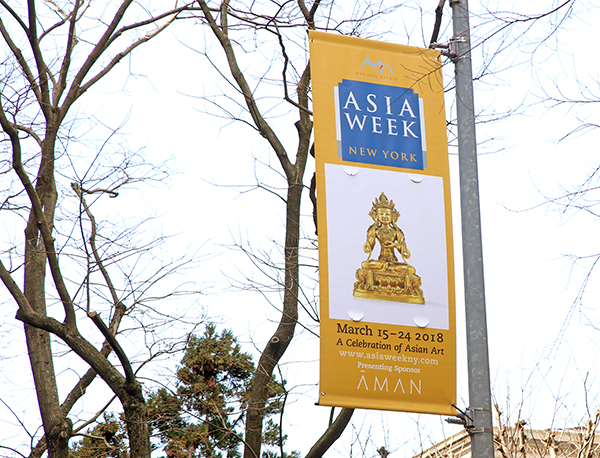
As we look towards Asia Week New York's tenth anniversary in March 2019, we're also taking a look back at the event's most memorable works of art. This is part 4 of a multi-part series in which we are showcasing the most important objects sold by our participants over the last decade. Check back here often or subscribe to our newsletter to stay updated. Below, the stories of four incredible objects:
AN IMPORTANT PORTRAIT FROM CARLO CRISTI
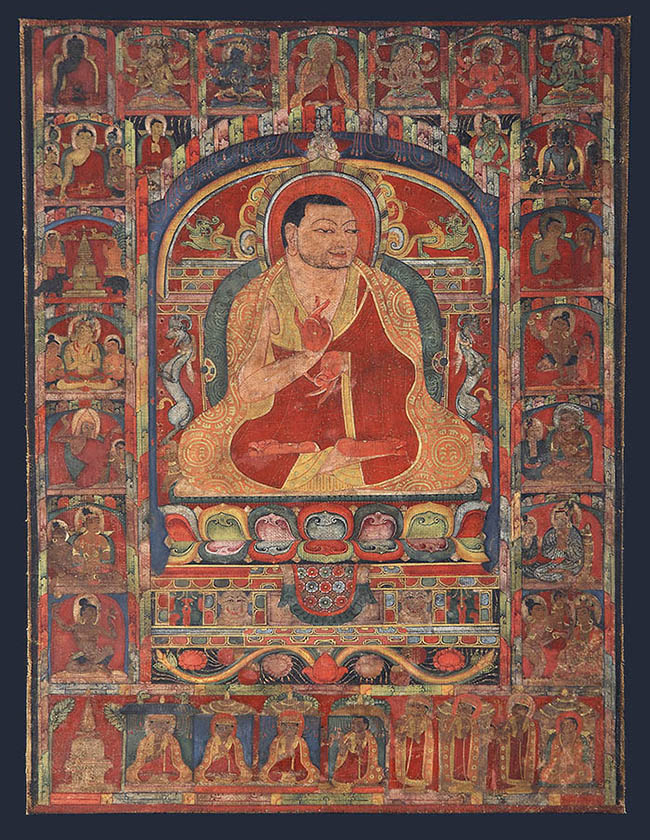
Portrait of Phagmotrupa
Distemper on cotton
Tibet, 13th c.
15 3/8 x 11 5/8 in. (39 x 29,5 cm)
This important tangka shows the portrait of Lama Phagmotrupa (1110-1170 CE), guru of Tashipal, founder of the Taklung monastery (founded in 1180 CE), and one of the main seats of the Kagyu sect. On the reverse, a dedication by Onpo Rimpoche, a successor of Tashipal who was shortly abbot of the Taklung monastery, confirm the date of this tangka to the 13th century. Portraiture of the gurus (masters), produced as realistically as possible but with iconic signs of divinity, coincided with the development of monasticism in Tibet. Phagmotrupa seems to have been one of the first Lamas to be represented on canvas, and there exist only a small number of his portraits. These paintings were made for meditation, to pass on teachings to disciples, and to recognize the historical importance of the master.
The tangka was sold in 2008-2009 to a private European collection.
AN EXQUISITE VASE AT ZETTERQUIST GALLERIES

In the words of dealer Eric Zetterquist:
“In 2012, on the occasion of the 20th anniversary of my gallery, I had the immense pleasure of handling this exquisite and rare Guan-Yao vase. Authentic Guan-Yao (“Official Ware”) is one of the most rare and sought-after of all Chinese ceramics. Produced exclusively for the Imperial Court in the Southern Song Dynasty, adjacent to the Imperial Palace grounds in the Laohudong Kiln Site. Very few of these pieces survived, and most are in public collections. Originally influenced by the Northern Song Dynasty Ru-Ware forms, this piece possesses not only a fine Southern Song form, (often repeated in Longquan celadons), but an ideal Guan-Yao glaze. It is bubbly and slightly opaque with a blue-green hue, and is covered overall with an intentional craquelure that has colored to alternating translucent silver and brownish-gold colors. An identical piece is in the collection of the Victoria and Albert Museum, London.”
A SYMBOLIC CONTEMPORARY DRAWING AT KAI GALLERY
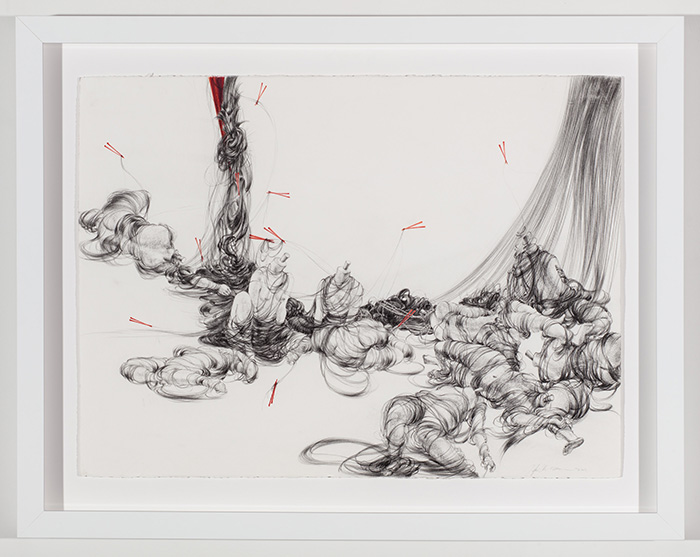
Hui Chi Lee
Untitled, 2011
Graphite & color pencil on paper
28.5 x 36.5 inches
During Asia Week New York 2018 at Kai Gallery, this piece by Taiwanese artist Hui Chi Lee caught the eye of a curator from the Herbert F. Johnson Museum of Art, Cornell University, and the museum subsequently acquired the work. Lee’s name for this series, “Lián: Liàn,” derives from a pair of Chinese homophones, which, depending on the context, mean “to connect” and “to enchain.” To Lee, the seemingly powerless mannequins evoke life in contemporary society. The artist writes, “I am interested in the obscure and anonymous quality of the human form, and I want to guide the viewer to consider the subject matter in a critical, holistic manner… In Chinese tradition, lengthy hair symbolizes longevity. Hair signifies the duration of a life span, an expanse of time of which we are often hardly aware. While we may acknowledge the finitude of life, time is envisioned as somehow endless. Humans favor stability and continuity. Thus, even when one’s comfort and status is threatened or entangled by a chaotic environment, ambivalence seems inevitable. Color is introduced here in a symbolic, metaphorical way. Red symbolizes both a warning and an awakening moment in life.”
A MONUMENTAL GUARDIAN AT GISÈLE CROËS S.A.

Buddhist Guardian Weituo, courtesy of Gisèle Croës S.A.
Ming Dynasty (1368–1644), most likely 15th century
Total height of figure with stand: 93 in (236.22 cm)
Photo by Maggie Nimkin Photography
This monumental bronze, standing over six feet in height even without its stone base is a representation of Weituo, a Buddhist guardian figure whose mythology emerged well before the Ming. Dressed in full armor and wearing the ornate helmet of a Chinese general, Weituo, his hands pressed together in prayer and reverence, stands resolute on a square stone base, faithfully guarding the Buddha, his teachings (the dharma), and Buddhist monasteries, monks, and treasures. This extraordinary, powerfully conceived bronze sculpture of General Wei exquisitely captures in his stance and facial expression his dual role as fierce defender of and unwavering believer in the Buddha, the dharma and the daily life of the Buddhist community or sangha. Appropriately, Weituo was also considered a symbol of determination in spiritual training and practice.
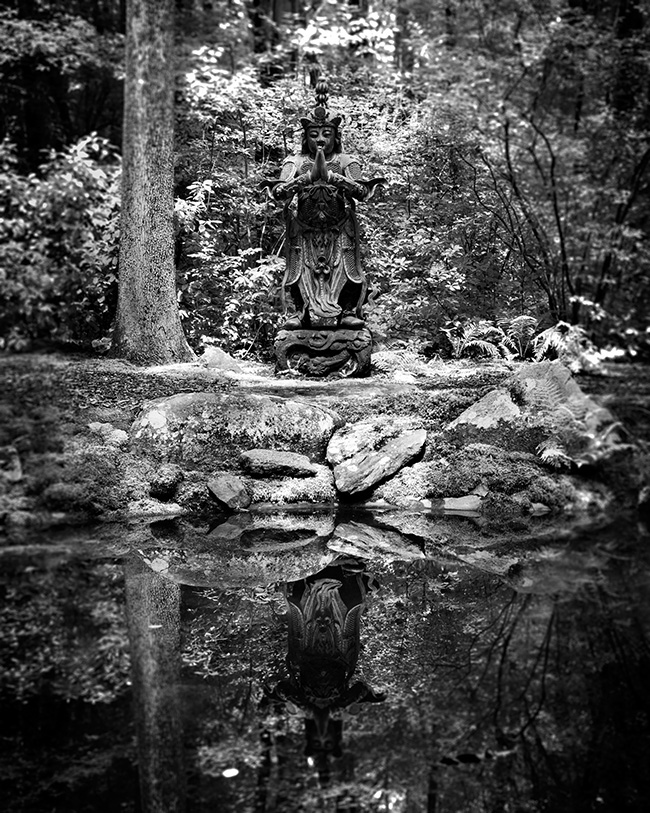
The following is an account of the history of the object by dealer Gisèle Croës:
A few years ago, I was walking through a very large private park in company of the owner, and suddenly we arrived at a beautiful pond where I saw from a distance a magnificent sculpture (above). I had a visual shock and asked about this wonderful piece in such a remote area. After a while, I had the good fortune to acquire it.
With enthusiasm we decided to study the piece and researched its provenance. This piece was purchased in Beijing in 1918 by a prominent Japanese dealer from Kyoto, Yamanaka Sadajirō. More than a hundred years ago, Yamanaka & Company opened its first shop at 20 West 27th Street in New York City. Several decades later, the main overseas branch of Yamanaka & Company in New York occupied a five-story building, on fashionable upper Fifth Avenue, and there were equally prestigious branch offices in Boston, Chicago, London, Peking, Shanghai, Nara and Kyoto. The main Japanese office remained in Osaka. Many people contributed to the success of Yamanaka & Company, but Yamanaka Sadajirō provided the vision that guided the international operation through its formative years.
We asked Professor Annette Juliano from Rutgers University to write an essay on the Weituo. This essay was published in “Gisèle Croës, Matter and Memory Part II,” Brussels, Belgium, 2014, (pages 9–28).
When exhibited in New York at Gagosian Gallery in March 2014, the piece raised an immense interest and was admired by a very large audience of collectors, Institutions and museums. The object was sold in 2014 to a private Chinese collector.
• • •
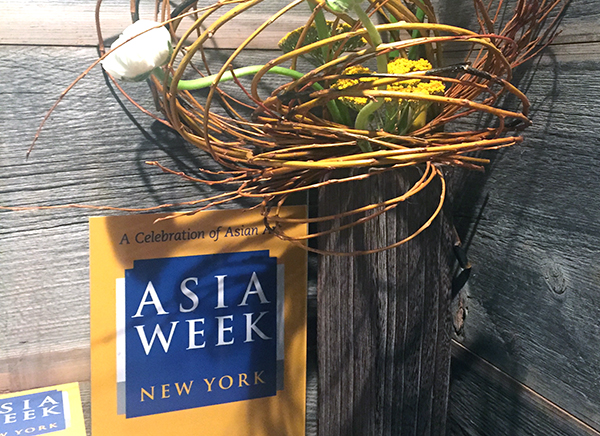
As we look towards Asia Week New York's tenth anniversary in March 2019, we're also taking a look back at the event's most memorable works of art. This is part 3 of a multi-part series in which we are showcasing the most important objects sold by our participants over the last decade. Check back here often or subscribe to our newsletter to stay updated. Below, the stories of four incredible objects:
A SILK PORTRAIT FROM ALAN KENNEDY
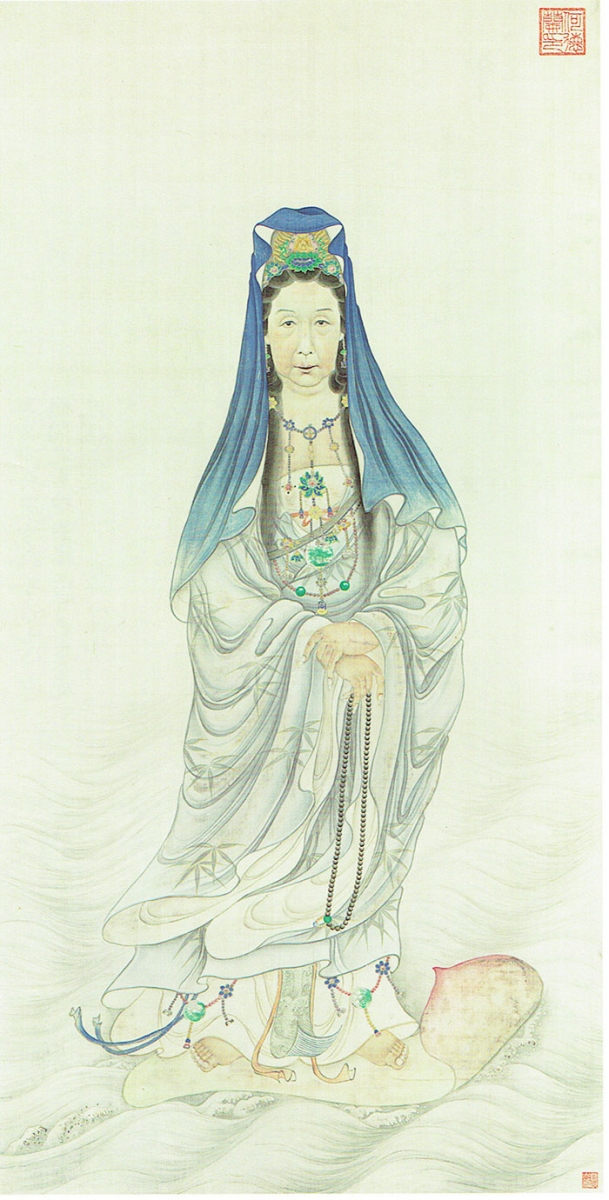
A rare portrait on silk was acquired by a museum from Alan Kennedy during Asia Week New York in 2016. This painting will soon be exhibited in a major exhibition entitled, “Empresses of China's Forbidden City.” The exhibition opens at the Peabody Essex Museum in Salem, Massachusetts on August 18th, and will travel to the Freer/Sackler Museum in Washington, DC.
The painting depicts the Empress Dowager Cixi (1835-1908) in the guise of Guanyin, the Buddhist bodhisattva sometimes referred to as the Goddess of Mercy. It was painted by a court artist in the Forbidden City, and was created at the request of an American missionary named Reverend Issac Taylor Headland. His wife was a physician who treated several of the women in Cixi's entourage.
One of the unique aspects of the portrait is that it depicts the face of the Empress Dowager in a realistic manner, without hiding the effects of age. Other paintings of her show Cixi in a more idealized manner, looking younger than her actual years. The Empress Dowager would not have been pleased if she had seen this portrait.The painting was reproduced in a book by Reverend Headland (Court Life in China, 1909), and he described the unusual circumstances behind the making of the painting. The portrait remained in the possession of his descendants until recent times, and will now be seen by the many visitors to the upcoming museum exhibitions.
RUNJEET SINGH'S BEJEWELLED DAGGER

Bejewelled dagger
17th-18th century
Turkey/India
This wonderful Khanjar or Jambiya dagger is of almost identical form to a well-known example in the Dresden Armoury (Rustkammer, Staaliche Kunstsammlungen Dresden), Inv. No. Y143, illustrated in Holger Schuckelt, The Turkish Chamber (2010), p124-5, which was captured as booty at Varna by the Russians in 1828, and presented to Prince Carl of Prussia by Tsar Nicholas I.
This example, with a similar pale nephrite jade hilt and scabbard mounts, has more complex and abundant decoration with large flower heads and fruits in groupings of cabochon rubies, and leaves with cabochon emeralds. The base of the hilt features a row of small rubies and larger emeralds of ascending size, and the apex of the pommel has a double row of rubies terminating with green emerald tendrils on each side. The stones are all set in the ottoman style, secured within silver gilt shaped collets and straps in imitation of Indian kundan work.
On the wavy snake-like blade of watered steel, traces of gold decoration remain at the forte as well as a gold border along the edges. The original wooden scabbard, recovered in its later life, is fitted with original throat piece and chape of matching jade.
The dagger was sold by Runjeet Singh to a private collector during Asia Week New York 2018.
A PAIR OF CERAMIC CHAIRS AT DAI ICHI ARTS
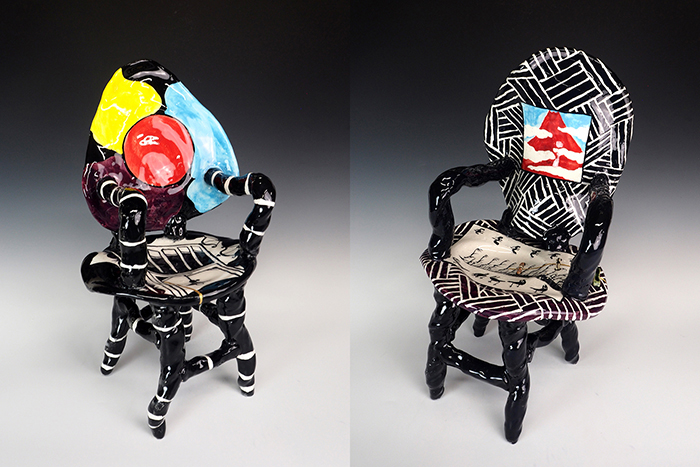
SUZUKI Goro 鈴木五郎 (1941- )
Left: Los Angeles Oribe Chair ‒Foot- ロス織部 椅子 ( 座面に足 ) H18.8” x W10.2” x D9.4”, Stoneware
Right: Los Angeles Oribe Chair ‒Mt. Fuji- ロス織部 椅子 ( 富士山 ) H19.4” x W10.8” x D10.2”, Stoneware
From Dai Ichi Arts: “This is a pair of ceramic chairs created by our artist SUZUKI Goro (1941- ) who is pushing his own limits in the pursuit of his art. He combines his skills in throwing and building with a lifetime's knowledge of material. You can truly say that he was born in clay and plays in clay. This pair was exhibited in our window during Asia Week New York 2018, and they attracted many people's attention with their playful and whimsical form and design. Both chairs were sold to a private collector who admires Suzuki's work.”
A SYMBOLIC UNION AT KAPOOR GALLERIES
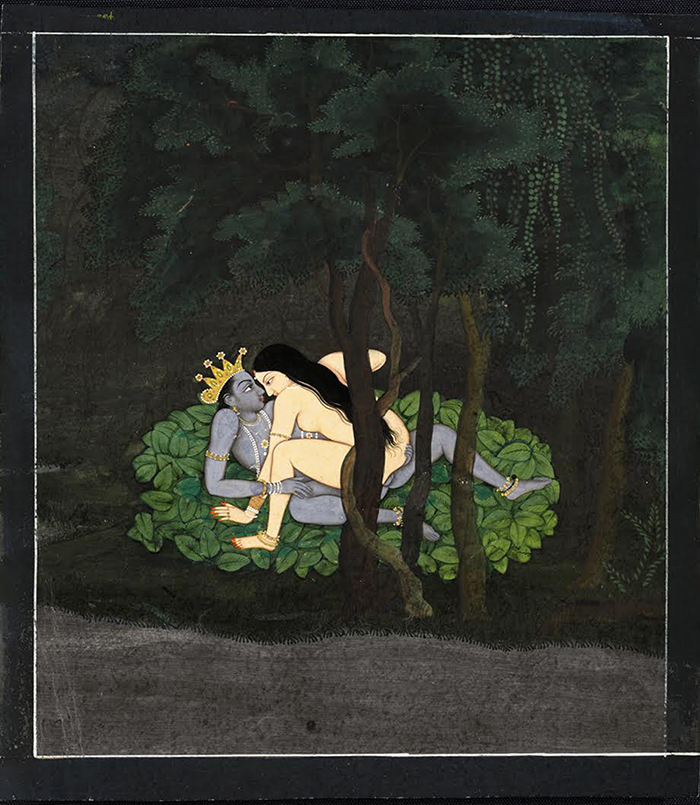
Radha and Krishna Intertwined, Folio from the Kangra 1775 Gita Govinda
The Kangra 1775 Gita Govinda is seen by scholars and connoisseurs alike as the most profound illustration of Jayadeva’s Gita Govinda, which translates as “Song of Dark Lord”. Created in the late 12th century, Jayadeva’s Gita Govinda is a monumental work of literature from Indian culture. Superficially it portrays the ageless story of the arduous love between man and woman, it is also an allegory for the love of god. The Gita Govinda is the only example of miniature painting in which such a vast illustration of romantic encounters is explored.
In this image, the passionate lovemaking and climactic union of Radha, a symbol of the “goddess”, and Krishna, the love of god, is depicted with full emotion. Radha has boldly and confidently aligned herself directly atop Krishna in order to control the lovemaking, which represents the transcendent union of humans with the Divine, forgetting about ego and dissolving in supreme ecstasy.
This folio was sold at Kapoor Galleries during Asia Week New York 2016 to a private European collection.
• • •
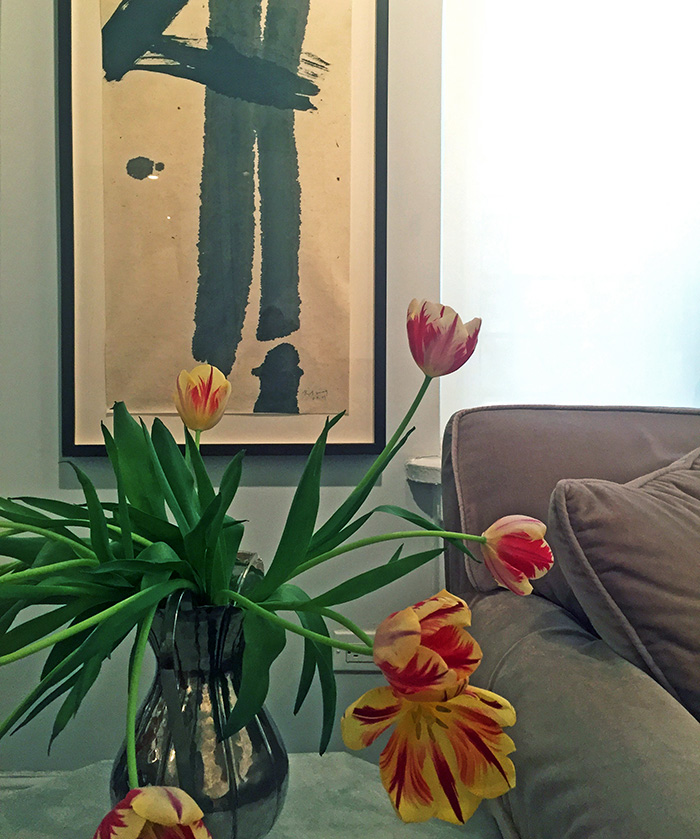
As we look towards Asia Week New York's tenth anniversary in March 2019, we're also taking a look back at the event's most memorable works of art. This is part 2 of a multi-part series in which we will be showcasing the most important objects sold by our participants over the last decade. Check back here often or subscribe to our newsletter to stay updated. Below, the stories of four incredible objects:
GIUSEPPE PIVA'S RARE SAMURAI ARMOR

An exceptional samurai armor from the Inaba clan
Mid Edo period (1615 – 1867), 18th century
Helmet signed: “Masuda Myochin Minbu Ki no Munesada Saku” and dated: “A lucky day in February in the 7th year of Horyaku” (1757)
Provenance: Iyo no kami Inaba clan
The helmet is made in the style of a Kamakura period kabuto, with an 18 plates rounded bowl showing large protruding rivets. The exquisite parcel giltwood front decoration is shaped as a shachihoko, a mythical creature often represented as protection against fire. The neck guard is covered with a rare horsehair red and white decoration. The cuirass is richly decorated in maki-e lacquer over a black ground, with a red figure of Raijin—the god of Thunder—creating a storm beating his drums among clouds. The same black lacquer is used to cover all the other armor’s parts, except for the helmet’s bowl.
The Inaba family originated in 16th century Mino Province; during the Edo period, as hereditary vassals of the Tokugawa, the clan was classified fudai and its members were appointed daimyō of large and strategic provinces; they also covered various important administrative, political and military roles. Myochin Munesada, who signed and dated the kabuto, is reported to be son of the famous Muneakira; his works are very rare.
The armor was sold by dealer Giuseppe Piva during Asia Week New York 2016 to a private European collector.
A SONG WITHOUT A SOUND AT M. SUTHERLAND FINE ARTS

Jia Youfu
A Song Without a Sound
2007
Ink on Xuan paper
33.5 x 63 inches
Dealer Martha Sutherland shares some vivid memories below:
I first saw this piece in Jia You Fu’s studio outside of Beijing one hot, sultry summer day. It was one of only several “da hua” that Jia painted over the previous winter. He usually kept one or two very large scale paintings and then did several more slightly smaller versions on a similar theme.
“Song without a Sound” stopped me in my tracks when I entered the studio. Painted only in ink and ink wash with no colored mineral pigments, the composition is like a vortex, spinning within the rocky precipices of a Northwestern Chinese mountainscape, as if you were hypnotized and lured into the scene. The more one studies the brushwork, the more one is amazed at the artist’s control of the layers of ink washes and brushwork.
A new client walked into my gallery during Asia Week New York. Having done his homework, he requested a private appointment for a more relaxed and intimate look at other Jia Youfu pieces in the inventory several weeks hence. When he saw “Song Without a Sound” for the first time, he reacted much like I did in Beijing. I knew then that he would buy it.
M. Sutherland Fine Arts is lucky to still have a handful of pieces by Jia in our inventory. Each year, Asia Week New York turns out more new serious collectors who come to New York from throughout the States, Europe and Asia.
THREE GIANTS AT JOAN B. MIRVISS LTD
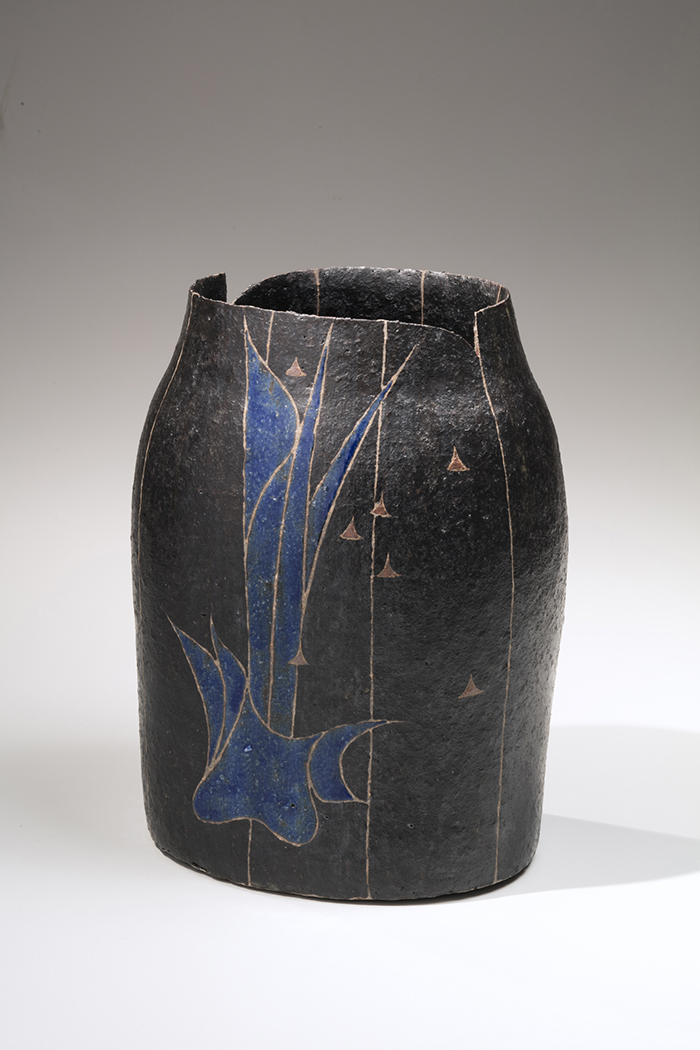
Kamoda Shōji (1933-1983)
Slightly flattened ovoid vessel with blue enamel decoration and striped matte black ground
1977
Glazed stoneware
12 1/4 x 9 1/2 x 7 in.
31.3 x 24.5 x 18.3 cm.
Photo by Richard Goodbody
Trevor H. Menders, during an internship at Joan B. Mirviss Ltd, reflected on the gallery's seminal Asia Week New York 2018 exhibition:
Asia Week New York 2018 witnessed contemporary Japanese clay assuming its rightful place as fine art in the American public eye. The transformative 20th-century Japanese ceramists Kamoda Shōji, Matsui Kōsei, and Wada Morihiro featured in our exhibition Three Giants of the North each appeared by both name and image in numerous publications. While these appearances were significant, the biggest victory for the entire field of modern Japanese ceramics comprised two New York Times articles: “Asia Week’s Rare and Unusual Objects for Art Lovers and Collectors” and “21 Art Exhibitions to view in NYC This Weekend.”
In the first, only three works were illustrated: the National Treasure 17th-century screens of Pines by Hasegawa Tōhaku [Japan Society], the second an ancient Tibetan mandala [Asia Society], but the third prominently featured a stoneware vessel by Kamoda Shōji from Three Giants. Modern ceramics were clearly equated with benchmark master paintings from the bygone eras. For us, this was a transformative moment for both East and West.
The second NYT article stated: “the work ranges from religious statuary to textiles, prints and paintings. The collection of ceramics by the excellent 20th-century potter Kamoda Shōji at Joan B. Mirviss is a notable highlight.” Giants appeared as the second exhibition listed, directly following a discussion of a show on modern Brazilian art at MoMA. The same stoneware vessel by Kamoda appeared at the top of the page.
The appearance of works by 20th century Japanese clay artists next to the likes of Momoyama period folding screens or Latin American modernist pioneers has always been an aspiration for us, but never an expectation. Introducing Japanese ceramics to the West has been a process spanning four decades. Having a luminary of modern ceramics appear on the same page as a major MoMA exhibition in the New York Times marks a coming to fruition of this challenge, and a triumphant start to the gallery’s fifth decade.
A VESSEL-SHAPED TABLE AT NICHOLAS GRINDLEY

A jichimu table in the form of an archaic fang ding
China, probably Daoguang (1821-1850)
Jichimu wood
33 3/4 x 63 5/8 x 19 1/2 in
(85.7 x 161.6 x 49.5 cm)
Rebecca Gardner, manager at Nicholas Grindley Works of Art, writes:
The most unusual item we have shown during the 10 years we've participated in Asia Week New York was the archaic-form table we exhibited in March 2017. This attracted attention from both furniture enthusiasts and archaic bronze collectors alike.
The table, made from jichimu, was in the form of an archaic fang ding, a bronze ceremonial vessel, but was constructed during the Qing dynasty—probably Daoguang 1821-1850. Before we acquired this table, only two other examples of tables of this archaic fang ding form were published, and these might well have been the same table, although the dimensions vary in the two publications. The first was in the catalogue of the Guanfu Museum, Beijing, page 75. The Guanfu Museum is a non-profit museum in the PRC with its main location in Beijing; Ma Wei-Du is the founder and director of the museum. The second was published in Tian Jiaqing’s ‘Classic Chinese Furniture of the Qing Dynasty’ no. 90, page 200, where it is attributed to “Antique Shop, Beijing.”
We sold our table to a prominent private collector, who in turn lent it to the Art Institute of Chicago for their exhibition early in 2018, Mirroring China’s Past: Emperors and Their Bronzes.
• • •

As we look towards Asia Week New York's tenth anniversary in March 2019, we're also taking a look back at the event's most memorable works of art. This is part 1 of a multi-part series in which we will be showcasing the most important objects sold by our participants over the last decade. Check back here often or subscribe to our newsletter to stay updated. To start, scroll down to read the accounts of three of our participating dealers:
ONISHI GALLERY'S “RING OF FLOWERS”

Tokuda Yasokichi III (1933-2009), Living National Treasure
Plate Rinka (Ring of Flowers)
2000
Porcelain with vivid colored glazes (yôsai)
h. 4 x dia. 22 inches
This stunning, vividly colored porcelain piece “Ring of Flowers” by Japanese Living National Treasure Tokuda Yasokokichi III was exhibited at Onishi Gallery during Asia Week New York 2013 and was acquired by The Metropolitan Museum of Art through the William R. Appleby Fund. It is now on view at the Met in the Contemporary Japanese Ceramics gallery.
INTRICATE GOLD EARRINGS AT SUSAN OLLEMANS
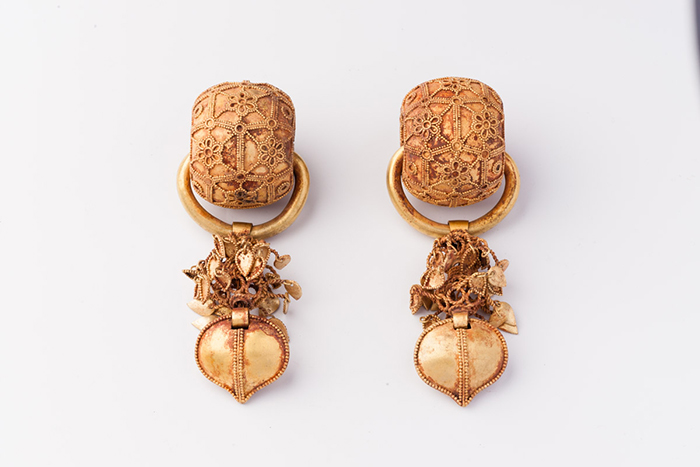
A large pair of gold filigree drop earrings from the Silla Period, 6th Century, Korea. Length: 8.7 cm.
Gold earrings were worn by both men and women of the Silla and Gaya elite, and are the most prevalent type of jewelry found in tombs. Goldsmith techniques on display here range from simple hammering to the more complex method of granulation, in which tiny gold beads were adhered to the surface to create intricate designs.
The earrings were sold to the Brooklyn Museum of Art in 2013. Similar examples exist in the collections of the National Museum of Korea in Seoul, and The Metropolitan Museum of Art in New York.
A DECCANI MINIATURE AT OLIVER FORGE & BRENDAN LYNCH
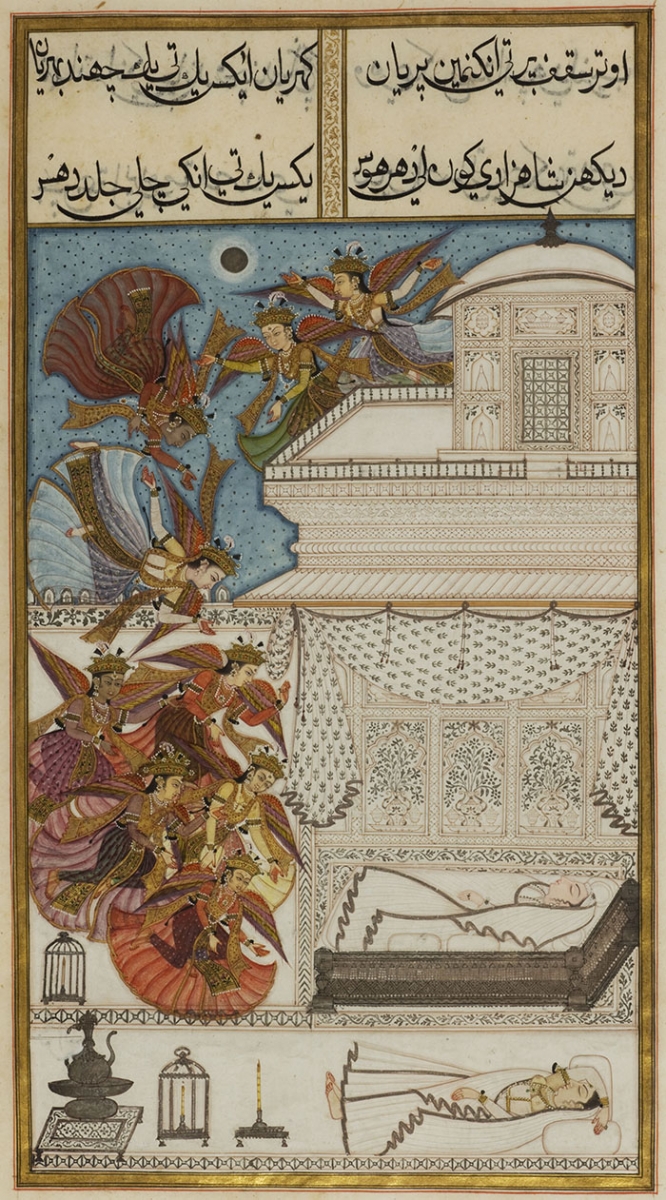
An Illustration to a Romance Written in Deccani Urdu, the Gulshan-i 'Ishq (Rose Garden of Love) by Nusrati, Court Poet to Sultan 'Ali Adil Shah II of Bijapur (r.1656-72 A.D.):
Angels descend from the heavens to visit a princess
Deccan, India, circa 1700-20
Opaque watercolour on paper heightened with gold and silver
Miniature: 22.3 by 14.4 cm.; 8 ¾ by 5 5/8 in.
Page 39.5 by 23.5 cm.; 15 ½ by 9 ¼ in.
“This painting was bought by an English collector, Mr. and Mrs. Jeremy Lloyd, one of seven offered at Christie’s in 1979,” explain the dealers. “In 2010 the Lloyds asked us to sell their collection and, via our Asia Week New York 2011 catalogue, we were able to establish not only the great significance of the manuscript from which the painting comes, but that of this particular painting.”
The unique design and palette of this evocative Deccan night-scene painting dramatically contrast the cascade of colour heralding the descent of the angels with the monochrome world of the cool, silent, moonlight-suffused palace. This is probably the finest page from what is unquestionably the finest Deccani manuscript of the period, outstanding for its calligraphy, its superb technical accomplishment and its poetical fantasy. The unpublished colophon (Christie’s, 1979) notes that the work was written by an unnamed author who ‘lived during the reign of ‘Ali ‘Adil Shahi, under whom I grew prosperous’. This would be ‘Ali ‘Adil Shah II of Bijapur (b. 1637) who ruled 1656-72 A.D., although there was no indication of a royal patron for the manuscript.
The painting was acquired by The Metropolitan Museum of Art, where it is currently on view in their Islamic Art galleries.
• • •